Plaster Casters
Plaster reproductions of classical sculpture were once an integral educational tool in teaching people classical history in the United States. Casts were widely used in museums, public buildings, and schools.
Casters, through the ages, have played an important role in the creation and reproductions of sculptures. Aside from studios that made copies of classical or Renaissance works, the accomplished caster worked side by side with the great sculptors of originals. He could make a masterpiece remain a masterpiece or in a short time he could potentially ruin many months of sculpting.
The casters’ challenge would be to pour a faithful and strong plaster copy without damaging the mold.
This oftentimes took great physical strength and the casters were a robust bunch of guys as you can see here.

Photo from: Kurutz, Gary F. (1989). Architectural Terra Cotta of Gladding, McBean. Sausalito, CA: Windgate Press. Pg. 43
The Start of P.P. Caproni and Brother
Between 1892 and 1952, the leading supplier for high-quality plaster casts was P.P. Caproni and Brother in Boston, MA. The Giust Gallery (now the Caproni Collection) traces its lineage back to the Caproni brothers, Pietro and Emilio. They identified all their casts with a hallmark that was embedded into the bottom surface, the impression of which you can see in many of our casts today.

Pietro Caproni, the founder of the company, was born in Barga, Italy in 1862.

Photo from: https://commons.wikimedia.org/wiki/File:Barga_Alps.jpg
He left Italy and came to Boston in 1876 and shortly after was listed in the Boston City Directory as an “image maker” working as an apprentice at the Paul Garey plaster cast studio.
The First Catalog and the Culture of Casts
After Caproni’s apprenticeship of seven years, he perfected his craft and became aware of the nature of the cultural community for whom he was creating the casts. As Paul Garey retired in 1894, Caproni and his brother bought out the studio and published their first catalog: Catalog of Plaster Cast Reproductions from Antique, Medieval, and Modern Sculpture.


His client list included prominent collectors such as Tiffany, Stanford White, Saint-Gaudens, Isabella Stewart Gardner, and countless schools, museums, and libraries.
The Growth of P.P. Caproni and Brother
They expanded their work force with craftsmen from Italy and quickly became one of the premier casts makers in the world. In 1895, Caproni purchased 2 adjoining lots on Washington Street in Boston and built the new Caproni studios. Copies of gargoyles from the Notre Dame Cathedral were placed at the corners of the studio roof.
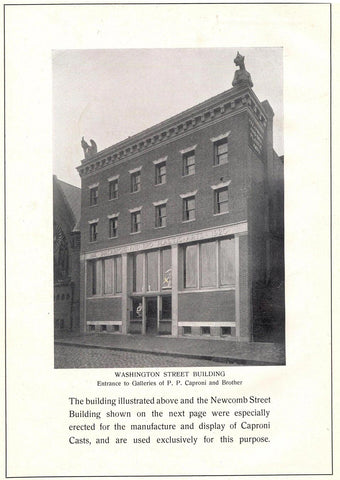
As people passed on the street they could see through the huge glass windows great pieces of antiquity such as the full-sized Victory of Samothrace and the Laocoon Group. The building totaled about 27,000 square feet and the entire first floor was devoted to the storage of molds and the casting room.
Work for some of Boston’s most Renowned Institutions
By 1901, Caproni published his first hard bound catalog. In addition to the Greek, Roman, and Renaissance statues and reliefs, he added the work of some modern European sculptors.

The studio’s commissions and sales continued to increase and in 1902 Caproni cast the 14 classical sculptures in the niches above the audience at Symphony Hall in Boston.

Photo from: https://commons.wikimedia.org/wiki/File:Symphony_hall_boston.jpg
Casting some of Europe’s Most Famous Statues
During these early years, Caproni with his mold makers made countless trips back to European museums to make piece molds of many of the world’s greatest masterpieces.
At that time, the museums and institutions had confidence in the skills of the master mold makers and would authorize permission to make the molds. Imagine going to the Vatican Museum today with a bucket of plaster and trying to make a mold of Michelangelo’s Pieta. By 1911, Caproni’s collection of molds grew to over 4,000 pieces and he printed his next and biggest catalog. This hard bound version was the largest Caproni catalog ever issued.
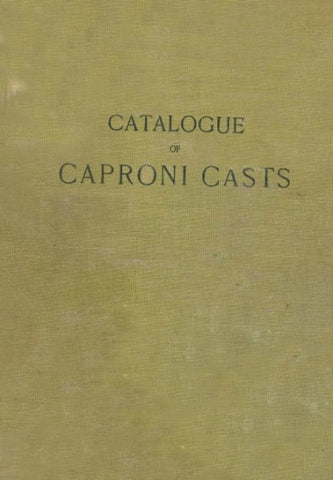
As you can see, you could purchase the full-size Laocoon Group for $200:

A full-size St. George or Michelangelo’s Slave was $75. Greek and Roman busts averaged $10 to $12 each:


The catalog also included hundreds of anatomical studies, ornaments, and animals.
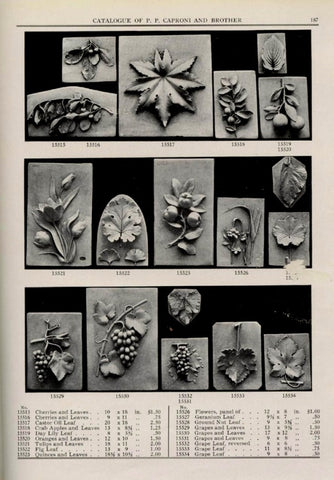
The Caproni Gallery
At that time, the Caproni Gallery was divided into 5 separate areas with casts from the history of sculpture including Classical, Renaissance, Gothic, and Modern.





A Team of Master Casters
The following years were prosperous for the Caproni studios and its continued inventory of high-quality plaster casts. The Caproni team of mold makers and casters included prominent craftsmen of that era including Leo Toschi and Ceasar Luchini and later Nedo Cassetari and Emilius Ciampa.
This picture shows some of the Caproni casters enjoying lunch in a reproduction of the big Rhino, by Katharine Lane Weems.

Photo From: Ambler, Louise Todd (1987). Katharine Lane Weems: Sculpture and Drawings. Boston, MA: The Boston Athenaeum. Pg. 48
And here are 3 casters (Pictured, left to right, Adelino Vanni, Ceasar Luchini, and Leo Toschi) with a plaster copy of Houdon’s Anatomy of Man.

Photo Courtesy of Margaret Toschi-Luppino
And another photo of Caproni Casters. Leo Toschi is in the front/middle:
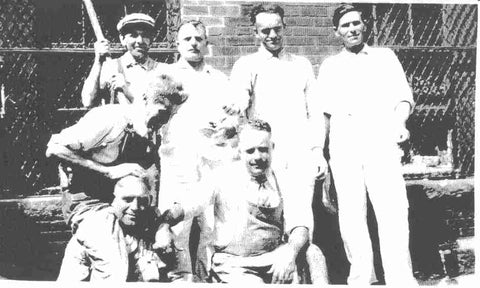
Photo Courtesy of Margaret Toschi-Luppino
The End of an Era
Caproni died in 1928 and his death coincided with a decreasing interest in the Classics and plaster casts. Cast museums were being dismantled and with the emergence of impressionism and later abstract sculpture, the museums focused more on the exhibition of contemporary work.
The World Wars and Depression also contributed to the decline of the Caproni studios. As it declined, it changed owners about 5 times. I will write more in upcoming posts about what came of the Caproni collection, and what survives today.
-Robert Shure
The Giust Gallery (now the Caproni Collection)
Want content like this delivered to your inbox? Sign up for our newsletter!

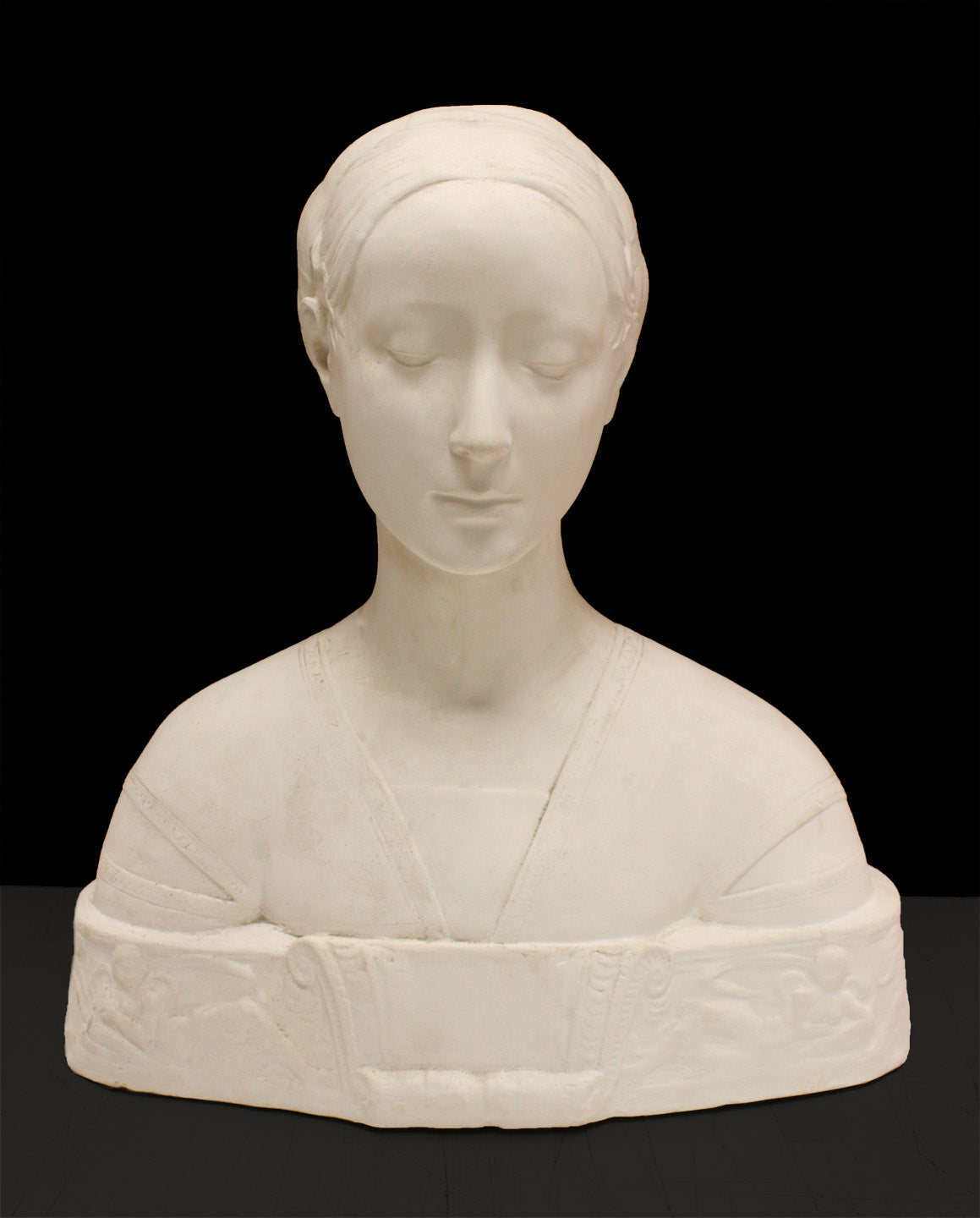
Comments
Hello Audrey,
You could start by sending pictures to orders@giustgallery.com. We can take a look and set up an appointment if you would like to come in.
Hello Eileen,
Unfortunately all the Caproni archives were destroyed in a fire from that time period. So we have no record of the metal companies you mentioned. It is possible that they were clients of Caproni’s or worked in collaboration with him. We do know that some of Caproni’s copies were recopied by Gorham Bronzeworks. This company was active around that time. It may help us if you could send some picture of these pieces (orders@giustgallery.com), and especially any areas that might have markings or numbers on them. With this, we will be able to refer back to our historic catalogs.
Hello Laura,
We do have a picture of Pietro Caproni and will be including it in a future post.
It is true that there were a fair number of Parthenon frieze copies reproduced around that time. Most of Caproni’s customers were schools, colleges and libraries. He did ship his casts throughout the country. At this time, many have probably been preserved, although others may have been discarded or destroyed due to changes in taste and renovations or modernizations of the school buildings. A Parthenon plaque that was made from the turn of the century in good condition could be of value. A few years back some pieces of this time were sold by Sotheby’s and they were sold for a substantial price for a plaster. As time goes on, the rarity of these casts will increase as will the value. If you wish, send us some pictures (orders@giustgallery.com) of the Staten Island casts and we can offer an opinion on their condition and quality.
Robert
Hi:
I purchased a Caproni mask a few years ago at an antique shop. I bought it without knowing much about the maker, just loved the face. Would it be possible to bring it to your gallery so I can find out a little bit more about it?
I could send pictures if that is easier.
Thank you,
Audrey
Numerous plaster casts from the Caproni catalog turn up during the 1910s and 1920s as galvano bronze bookends from the New York decorative arts companies of P. Mori & Son (Placido & Albert Mori), National Metalizing Company (Francis Plant), Applied Art and Metallizing Co.(Placido Mori), Armor Bronze Company (Francis Plant) and Kathodion Bronze Works (Eugene Aucaigne).
Were these companies Caproni clients. Were the bookends actually metalized and hand-painted Caproni casts?
I became interested in Caproni’s work after viewing the panels from the Parthenon frieze that hang in Cleveland’s Carnegie West Library. I’ve come across stories about institutions like Emory University and the College of Staten Island “rediscovering” their friezes. In the latter case, the friezes were described as rare and precious, and the college raised more than $100,000 for their restoration. But weren’t these casts extremely popular in the early 20th century? There must be a fair number of them still around. What might make the Staten Island casts especially rare and valuable?
Another question: do you have a photo of the Caproni brothers you might post on your blog?
Hello Carol,
Thanks for your note, and I do hope you can visit again. We have been quite committed to keeping the Caproni name alive, and have always been amazed of his accomplishments and legacy.
Thanks,
Robert
Dear Robert,
Thank-you for all you have done for the Caproni name and your deep love for ART!
I would love to visit you again .
My very best to you,
Carol Caproni Hartley
912-659-0098